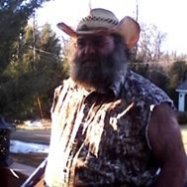2006 Yamaha big bear 400 4x4 cylinder rebuild
-
Similar Forum Topics
-
By Atomusthenes
This topic is being opened to discuss the feasibility of forced induction on small engines.
-
By Tim Keiper
1st problem, Does anyone know where I can find a stock carb for my Timberwolf, I have tried two different aftermarket carbs and they both suck. The machine runs great until it gets good and warm, then it keeps stalling unless I feather the throttle. it will even stall while I'm trying to go from 1st to reverse or vise versa. I took it to a buddy of mine who is a bike mechanic for years, and he told me try to find a factory carb. When I look online from dealers it says "NOT AVAILABLE" anyone have any suggestions ?
2nd, The small tab on the rear axle for towing is to short for even pulling my small yard trailer, I can't even turn a little bit and hit hits. I tried making an extension which worked great as far as length, but it bends the tab and then the extension drags the ground. I have an idea of what to do to fix it, but wanted to see if anyone else has had this problem and see how you solved it.
-
By Thumpinhard25
First thanks for any help guys, new to the forums and it's gotten me this far. I bought a 2001 bear tracker 250 for my family to get around the dirt bikes races. It wasn't running right and had a high idle. Previous owner thought it was a carb problem, so he ordered a new Zoom carb and new intake boot, but it still had the same high idle. ( I believe he had the throttle cable adjusted wrong, because it idled fine when I put it back together) So I tore down and cleaned the stock carb, and it started up and idled fine, but needed to have the choke 1/2 out to run. I swapped to the new zoom carb and had the same issue. Choke half out bike ran ok. I played with the needle and the pilot screw with no change. ( bike did seem to be running rich though, but didn't get better when I tightened pilot screw or raised meddle) I Took it to the races and once I started bouncing around in the cattle fields the quad started cutting out real bad. It would barely run. Sometimes it would run with choke off, sometimes choke 1/2, sometime choke full. I cleaned carb again, checked float level, and boots, no change still wouldn't run. Then suddenly it started running ok again. This makes me believe it's an electrical issue rather then carb. I know there's no air leak, it's been checked, both carbs are clean( I've swapped them out a couple times, it starts up immediately and usually idles fine. But then bogs down/ or stutters under throttle. I saw the post on the guy who disconnected his rectifier and reconnected and suddenly it started working again, which lead me to believe it may be electrical and not carb. So any advice on what I should check? Any way to test the CDI or rectifier? Once again, I appreciate your help.
-
By Tinkeringreg
Hi my name is Greg and I just acquired a free 2000 yamaha kodiac 400 4x4 with the ultramatic transmission that does not run. I plan to get it going and use it around my property
-
-
By Kaz
Troubleshooting a no spark issue, was running OK, maybe a little rich, turned it off, now no spark. I've checked/ohmed out the main key switch, the start/stop switch, neutral switch, brake switch - all good. It will crank the starter, but no spark with the starter or when I try the pull start. I've checked all fuses and diodes. Swapped battery. New plug. New coil. Swapped in a used CDI - no help. Traced, removed, cleaned, reattached all grounds. Removed things like my winch from the circuits to be sure a bad relay or something was dragging it down. When testing voltages, the orange wire going from the CDI to the ignition coil shows no/very low voltage-shouldn't it have 12V on it? Sometimes I get a very weak, intermittent glow on my spark tester, but not enough to fire the plug. I've checked continuity on just about all wires in the harness. Checked/cleaned/lubed w dielectric grease- all connections, redid a few that looked old/dirty. I've checked the stator resistances, all good, but have a stator and rectifier ordered anyway, will arrive Sunday. I verified that the rectifier has a voltage output back to charge the battery while cranking - 10.5-11V, low, but expected while starter is engaged. What else can I check as part of troubleshooting? I have a Haines service manual, but the 1999 350 4x4 seems to be an odd model, there isn't an exact electrical diagram for it, but found one for another year that has all the same number of wires and same color wires, so I've referenced that. Any hints, tips or advice would be appreciated! Thanks!
-








Recommended Posts
Join the conversation
You can post now and register later. If you have an account, sign in now to post with your account.
Note: Your post will require moderator approval before it will be visible.